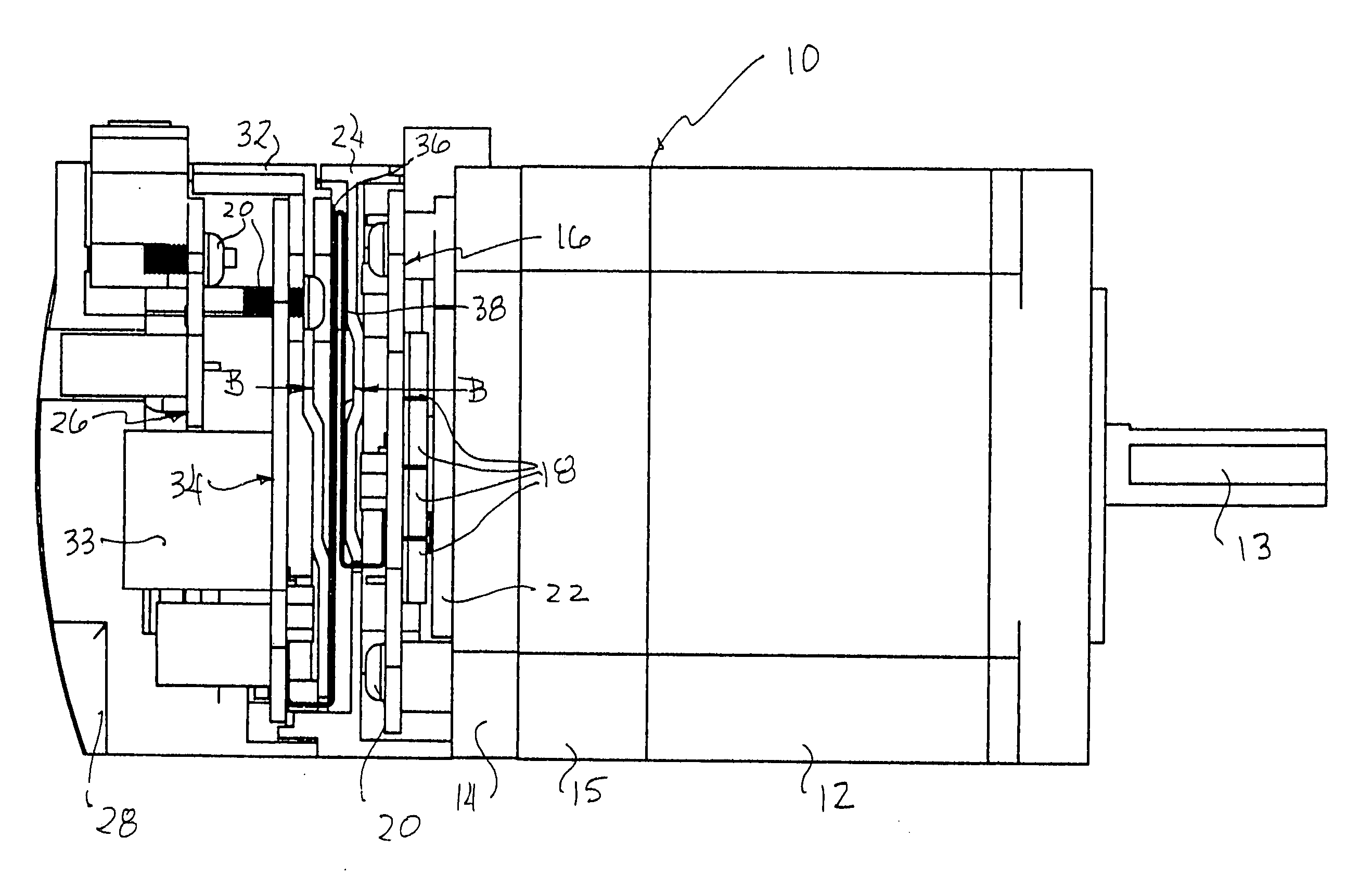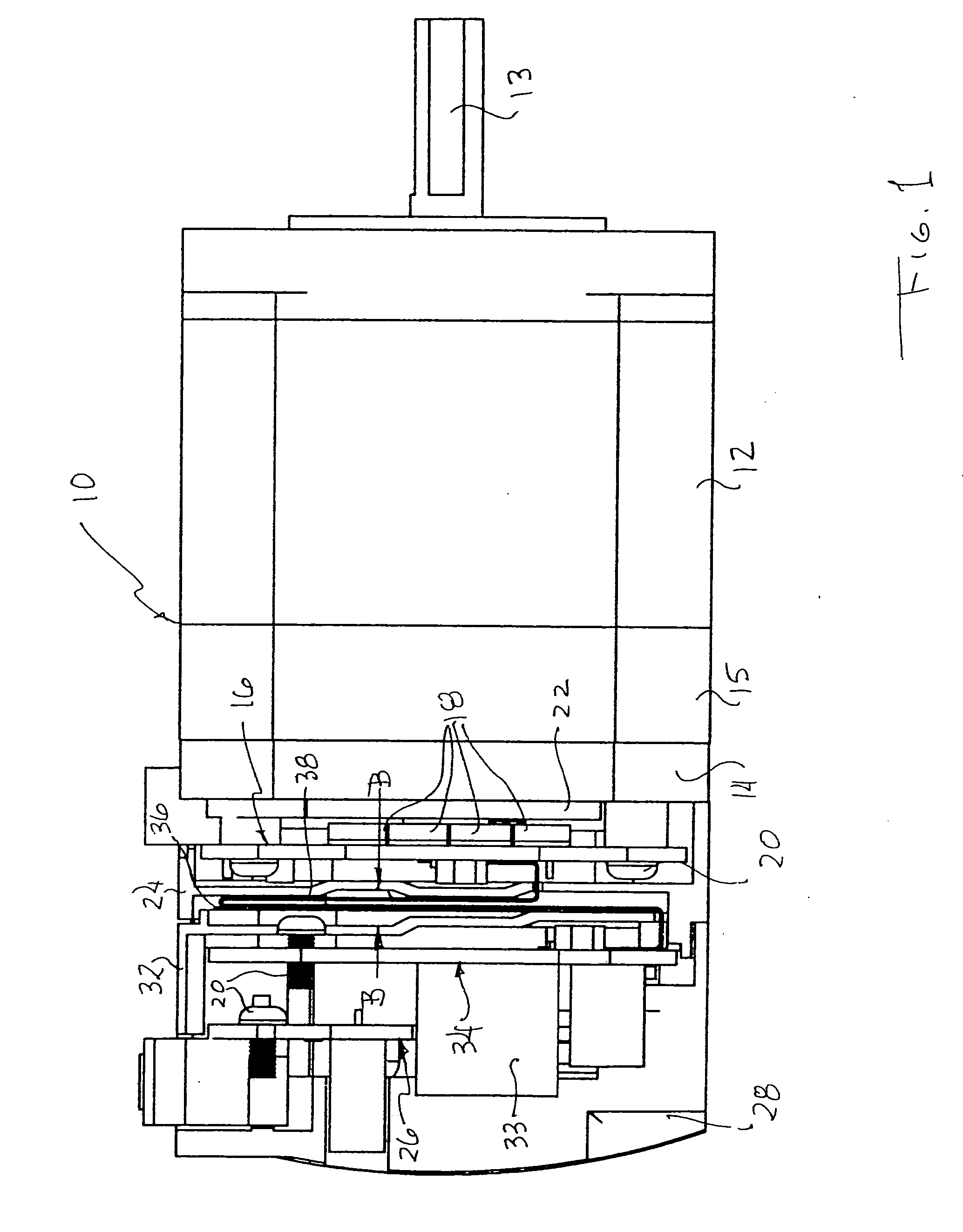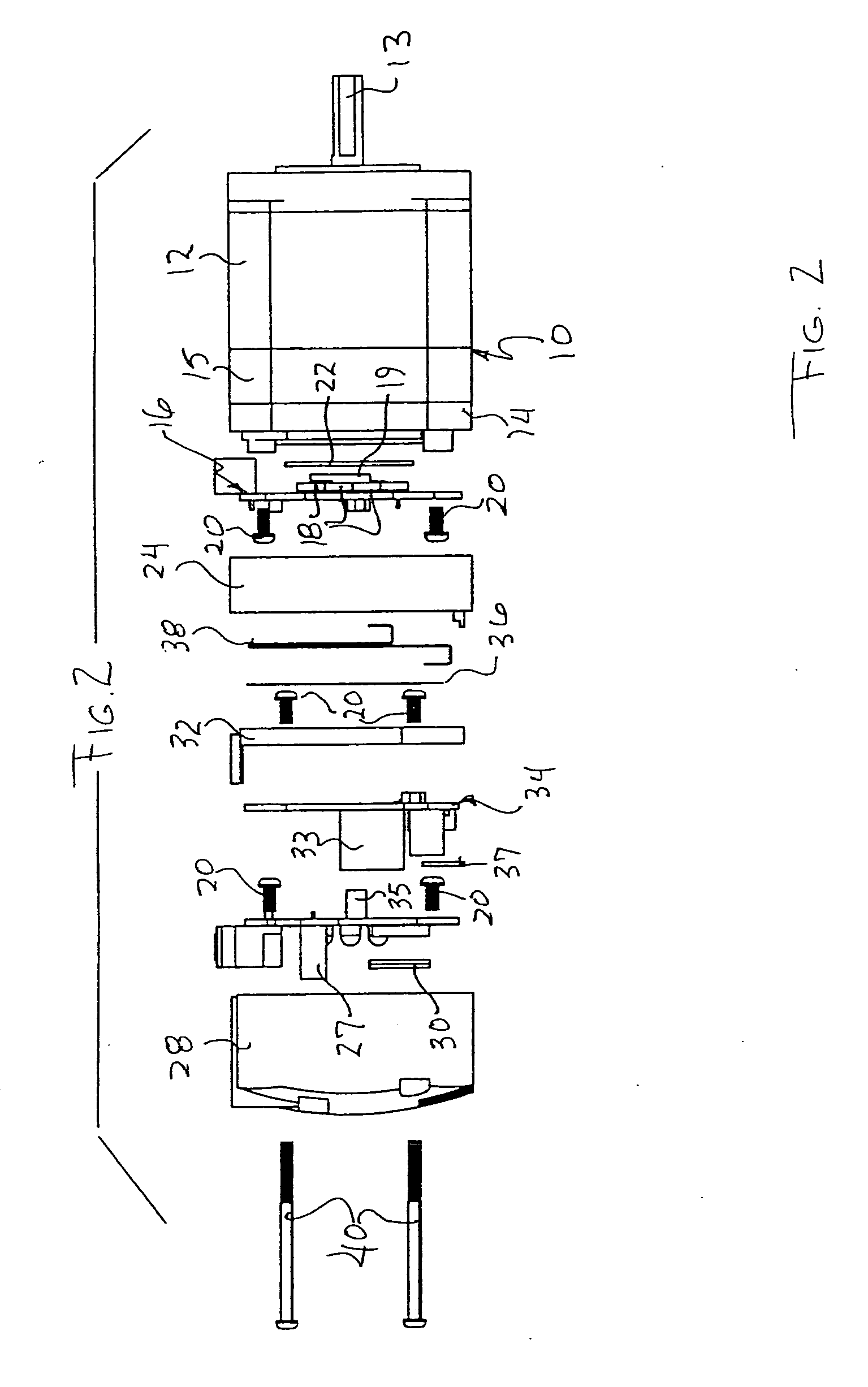Integrated electric motor and drive, optimized for high-temperature operation
a technology of integrated electric motors and drives, applied in the direction of windings, magnetic circuit rotating parts, magnetic circuit shapes/forms/construction, etc., can solve the problems of reducing the space available within the housing, preventing optimal performance, and resistors and like components adding significantly to the quantity of heat, so as to improve the management of heat transfer and optimize performance.
- Summary
- Abstract
- Description
- Claims
- Application Information
AI Technical Summary
Benefits of technology
Problems solved by technology
Method used
Image
Examples
Embodiment Construction
[0014] Turning now in detail to the appended drawings, therein illustrated is an integrated step motor system embodying the present invention and including a motor and sensor assembly, generally designated by the numeral 10, and an adjacent sensor cover 14. The motor includes a body (stator) 12 housing a rotor, the shaft 13 of which is visible, and the assembly includes a sensor housing 15, attached to the motor body. The foregoing components are commonly regarded to together constitute the motor of the system.
[0015] A printed circuit (PC) board, generally designated by the numeral 16, mounts an array of MOSFETs 18 (typically eight) and current-sensing resistors 17 (typically two), as well as a power resistor 19 (which is optional, and may be installed externally to dissipate energy regenerated under heavy braking loads). The board 16 (sometimes referred to herein as the “MOSFET board”) is assembled to the sensor cover 14 by screws 20, and thermal pads 22 are interposed for the eff...
PUM
 Login to View More
Login to View More Abstract
Description
Claims
Application Information
 Login to View More
Login to View More - R&D
- Intellectual Property
- Life Sciences
- Materials
- Tech Scout
- Unparalleled Data Quality
- Higher Quality Content
- 60% Fewer Hallucinations
Browse by: Latest US Patents, China's latest patents, Technical Efficacy Thesaurus, Application Domain, Technology Topic, Popular Technical Reports.
© 2025 PatSnap. All rights reserved.Legal|Privacy policy|Modern Slavery Act Transparency Statement|Sitemap|About US| Contact US: help@patsnap.com



